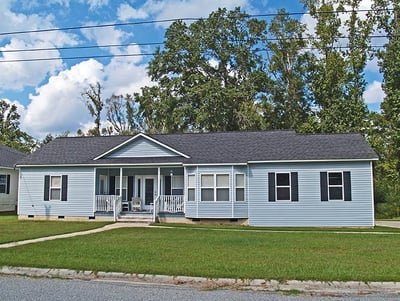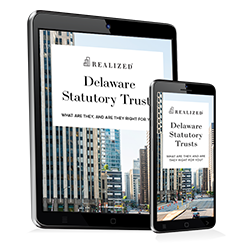What is Cash Flow and How Do You Generate Cash Flow in Real Estate?
.jpg?width=400&name=cash-stack-house-IS-533776853%20(1).jpg)
Cash flow is essential to any business. It is the difference between the money coming in and the money going out. That said, there are many ways to generate cash flow in real estate. First, let’s discuss what cash flow is, and what it comprises. Cash flow in real estate is the amount of profit you bring after expenses.
Do Tenants in Common Owe Fiduciary Duties?

There are many different ways investors can co-own commercial real estate, and the rights and responsibilities vary within each type of ownership structure.
How Does Realized Work With Qualified Opportunity Zones?

As we’ve pointed out in previous blogs, the Opportunity Zone program is still very new. And, as we’ve also pointed out, the best way to find an experienced, reputable Qualified Opportunity Fund (QOF) manager/sponsor, is to examine the previous track record.
How to Properly Vet a Qualified Intermediary

For a taxpayer seeking to defer recognition of capital gains by completing a 1031 exchange, one of the key determinants of success is often in the selection of the Qualified Intermediary (QI) used to facilitate the transactions. The reason for the importance of this role is the crucial tasks for which the QI is responsible. Mistakes by a Qualified Intermediary can result in the IRS disallowing the deferral.
What is Modern Portfolio Theory?
.jpg?width=400&name=tablet-pen-portfolio-IS-1171268236%20(1).jpg)
Modern Portfolio Theory (MPT) is the creation of Dr. Harry Markowitz. Markowitz received his Ph.D. in liberal arts from the University of Chicago. His advisers were Milton Friedman and Jacob Marschak.
Are Apartments Eligible For Qualified Opportunity Zones?

The IRS defines a Qualified Opportunity Zone (QOZ) as “an economically-distressed community where new investments, under certain conditions, may be eligible for preferential tax treatment.” Since its implementation as part of the Tax Cuts and Jobs Act of 2017, many of those “new investments” in the federally designated Opportunity Zones consist of real estate renovation or development.






